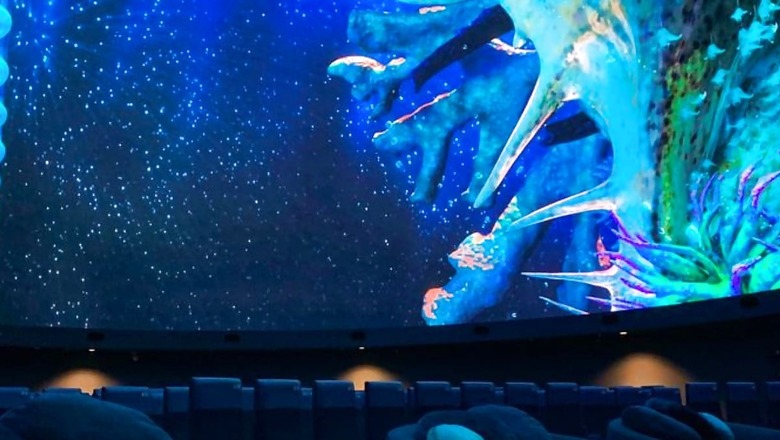
views
Imagine looking up at the make-believe night sky with all its celestial wonders coming alive in a dazzling life-like display before your very eyes. This will be made possible with India’s one-of-a-kind LED dome planetarium.
The new technology will ensure precision oriented true to life images unlike traditional projection technologies used in planetariums around the world. The unique hemispherical dome is set to come up in the majestic city of Mysore.
Bengaluru-based Indian Institute of Astrophysics (IIA), which is managing the project, has now awarded the work to a Japan-based consortium — Konika Minolta Inc, including RSA Cosmos, France, and Maharashtra-based Orbit Animate to ready the unique sky theatre by next year.
HOW IS IT DIFFERENT?
In general, almost all of the planetaria rely on special projectors which cast images and movies on a passive dome. This dome is painted black to create the illusion of a night sky. The planetarium system in Mysuru will be unique, since it will not have a projector at all.
Instead, the dome will be made of panels of LED lights, directly controlled by a computer system providing a superior contrast and 8K resolution. With a diameter of 15 metres, the dome inclined at 15 degrees’ tilt to the ground will accommodate 150 visitors at a time.
“A lot of preparation and training has gone into this project. Astronomy is flooded with data about this universe, and we hope to bring some LIVE images from our observatories too. There are so many possibilities for providing an immersive view of the universe,” Prof Annapurni Subramaniam, Director, Indian Institute of Astrophysics tells News18.
TREAT FOR SKY GAZERS
The Rs 85 crore Cosmology Education and Research Training Center (COSMOS) will be built on a 3-acre land at the University of Mysore (UoM) campus and is being funded by the Department of Science and Technology, and the Department of Atomic Energy.
“The advantage with LED domes is that it provides much better contrast with 8K resolution and does away with problems of conventional projection systems, where images often get washed out. There are only two such installations in the world in Japan for public viewing, and both are in Japan operated by the same company,” says Niruj Mohan Ramanujam, scientist at IIA.
Apart from science outreach, it will also act as a national data analysis training and resource centre for students and teachers. The institute has already begun conducting various astronomy outreach activities and data analysis workshops to build content.
As nations set their eyes on the distant universe, and new celestial observations pave the way for discoveries, the interests and curiosity among people has also grown steadily over the years.
Pramod Galgali, director of Bengaluru-based Jawaharlal Nehru Planetarium, says with the advancement in technology, new possibilities have opened up to provide an immersive experience to people. “We would need more such planetaria, if we are to cater to this burgeoning interest in science among people. These domes have a unique way of connecting people to this vast universe and its mysteries. In Bengaluru, we get about three lakh visitors every year, but the seating capacity is limited,” he adds.
The new planetarium would be built in the University of Mysore campus, at the foothills of the Chamundi Hills. A Kolkata-based agency has been roped in to design the architectural plan for the building. Once it is finalised, a local contractor will be finalised to ready the project by 2024.



















Comments
0 comment